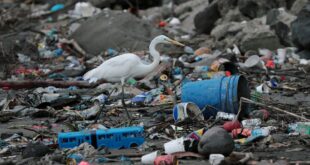‘It is beyond my wildest dreams of what we could have expected,’ says marine scientist.

During a research expedition off the coast of Chile, Erin Easton says her colleagues were constantly showing her some amazing new sea creature they’d just discovered.
“It would just be, like, ‘Erin, Erin, Erin, look!'” Easton, a marine scientist at the University of Texas Rio Grande Valley, told As It Happens host Nil Köksal.
“It is beyond my wildest dreams of what we could have expected. It felt like every time we went around a rock outcrop or zoomed in close, we were like: oh wow, we’ve never seen that.”
Easton was part of a Schmidt Ocean Institute expedition whose researchers documented more than 100 marine species they believe are new to science, including corals, squid, sponges, urchins, amphipods, fish, crustaceans and more.
The team took samples of each species and will analyze them to confirm they are, indeed, new discoveries — a process that could take several years.
Using an underwater robot capable of descending 4,500 metres below the ocean’s surface, the team was able to get an up-close look at previously unexplored seamounts — or underwater mountains — in and around Chile’s ocean borders.
They learned that each seamount was home to its own distinct ecosystem, including deepsea sponge gardens and coral reefs — colonies of colourful invertebrates around which other life flourishes.
“We saw corals that were a metre plus wide and tall, and are probably thousands of years old,” Easton said.
“It was just a really rewarding and positive feeling to know there are these corals that have lived this long and made it through all these centuries and millennia, still thriving.”

The deepest depths of the ocean were once believed to be cold deserts, largely devoid of life. But in recent decades, as technology to explore the deepsea improves, it’s become clear it’s home to a vast network of life.
In 2022, scientists identified 39 potential new deepsea species in the Pacific Ocean between Hawaii and Mexico. Earlier this year, the Schmidt Ocean Institute found four new species of deepsea octopus near Costa Rica, as well as thriving octopus nurseries.

Verena Tunnicliffe, a University of Victoria marine biologist who was not involved in the expedition, says its findings “bring to the public eye the extent to which we are ignorant of the ecosystems of our ocean.”
“The sponge and coral forests on these seamounts are vital to supporting biodiversity and ecosystem functions: food, habitat, shelter, nursery areas,” she told CBC in an email.
This has implications beyond the newly documented species, she said, noting that underwater mountain ridges “provide way-stations for migrating fish and whales to feed in deep water.”
“We must support research like this to understand better the linkages of these ecosystems to the rest of the ocean,” she said. “What do we stand to lose for the future health of the ocean?”
With increased access to the deepsea comes increased interest in resource extraction, like mining and trawling. The ocean floor is rife with highly coveted minerals, for example. And where there are seamounts with abundant life, there are likely fish.
The expedition explored seamounts that fall inside Chilean marine parks, as well ones that expand beyond the country’s jurisdiction “to collect data that could support the designation of an international high-seas marine protected area,” according to Schmidt Institute press release.
“Our world is changing so much right now, and we still have so much yet to explore in the oceans, and we are still discovering new species,” Eaton said.
“So now is a really good time to start making decisions about protecting the biodiversity and the habitats and ecosystems in the ocean.”
Interview with Erin Easton produced by Lisa Bryn Rundle
*****
Credit belongs to : www.cbc.ca
 Atin Ito First Filipino Community Newspaper in Ontario
Atin Ito First Filipino Community Newspaper in Ontario






